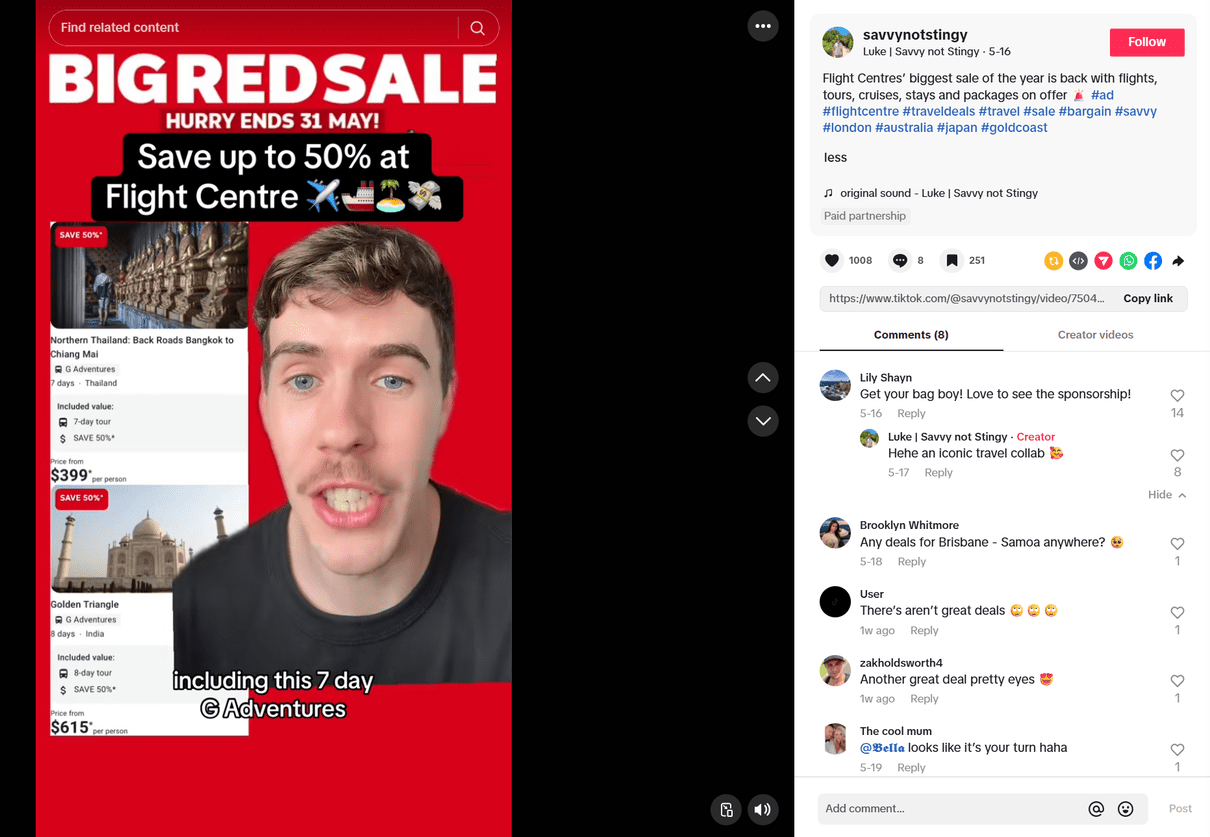Influencer Marketing Examples in Australia
Influencer marketing has emerged as a powerful avenue for brands to engage with potential customers on social media, leveraging the existing reach and authenticity of content creators. If you haven’t integrated influencer marketing into your strategy yet, the compelling social media statistics in Australia might just persuade you to do so.
According to the 2025 Sprout Social Index™ Australia, an astonishing 91% of Aussie social media users utilize these platforms to remain updated on trends and cultural phenomena. Furthermore, 24% of users plan to increase their social media engagement in 2025. With such widespread and growing engagement, brands must meet consumers where they spend their time—often with the aid of influencers.
In this article, we’ll explore the current landscape of influencer marketing in Australia, delve into various campaign types, and highlight real-life examples that illustrate effective strategies.
The Current Landscape of Influencer Marketing in Australia
Valued at over AU$21.1 billion, influencer marketing in Australia is reshaping how consumers interact with brands. Here are some eye-opening Aussie influencer marketing statistics that illustrate the industry’s current state:
- 76% of social media users reported that influencer content influenced their purchases in the last six months, according to Sprout’s Q2 2025 Pulse Survey.
- Among younger generations, 90% of Gen Z and 84% of Millennials acknowledge that some of their recent purchases were influenced by social media.
- 64% of social media users feel more inclined to buy from brands that collaborate with influencers they admire, a figure that rises to 76% for Gen Z and 74% for Millennials.
Given the profound influence creators have, influencer marketing in Australia operates under strict regulations. Let’s examine a few key regulatory bodies:
Australian Association of National Advertisers (AANA)
The AANA has developed a comprehensive Code of Ethics that governs advertising in Australia, including influencer content. This code emphasizes that advertising must be clear and identifiable, requiring influencers to disclose any sponsored content explicitly. Misleading tags or vague disclosures can lead to confusion, which is why using recognizable hashtags like #ad is crucial for transparent communication.
Australian Competition & Consumer Commission (ACCC)
The ACCC safeguards consumer rights by ensuring businesses adhere to fair trading practices. This includes monitoring social media for misleading advertisements. The ACCC enforces compliance and can initiate investigations into misleading content, as they did in December 2023 (source).
Audited Media Association of Australia (AMAA)
Initially focused on auditing traditional media, the AMAA established the Australian Influencer Marketing Council (AiMCO) in 2019 to promote transparency and accountability within the influencer marketing space. The council offers valuable resources, including a cheat sheet to help identify when a post requires disclosure.

Types of Influencer Marketing Campaigns
Influencer marketing campaigns vary widely, from single sponsored TikTok videos featuring nano-influencers to long-term collaborations with mega influencers. Here’s a closer look at several popular campaign types:
Affiliate Marketing: Influencers promote a brand and earn commissions for conversion through unique discount codes or referral links.
Sponsored Posts: Content created and shared at the brand’s expense. In Australia, such sponsorships must be clearly disclosed to maintain transparency.
Contests and Giveaways: Brands collaborate with influencers to run contests, increasing reach and engagement by incentivizing followers to participate.
Product Collaborations: Brands partner with influencers to co-create products, capitalizing on the influencer’s passion and audience.
- In-person Events: Influencers attend and share events like brand trips or product launches, providing real-time content and expanding brand visibility.
6 Examples of Influencer Marketing in Australia
Let’s delve into six notable examples of how brands in Australia are effectively leveraging influencer collaborations:
1. Tropeaka
Nutrition brand Tropeaka collaborated with Sophia Begg (aka Sopha Doph), a celebrated lifestyle influencer, to launch a new beauty matcha powder. Sopha’s genuine affection for matcha integrates seamlessly into her daily content, boasting over 1.4 million TikTok followers and 650,000 Instagram followers.

Key takeaway: Collaborate with creators who genuinely love your product to enhance authenticity and audience trust.
2. Runaway The Label
Runaway The Label, an online fashion brand, partnered with influencer Tammy Hembrow, who commands a staggering 17 million Instagram and 2.1 million TikTok followers. By aligning with Tammy, the brand successfully tapped into a highly relevant audience of young women.

Key takeaway: Choose influencers whose lifestyle and audience align closely with your target market for more impactful campaigns.
3. McCain
McCain partnered with food influencer Michael Finch, known for his engaging recipe content. This collaboration revitalized McCain’s image and attracted a younger audience.

Key takeaway: Influencers can modernize established brands, making them more appealing to younger consumers.
4. Carolina Herrera
Fashion brand Carolina Herrera enlisted influencer Maria Thattil to promote their GOOD GIRL perfume as a Mother’s Day gift, featuring her mother in the content. This personalized touch resonated deeply with audiences.

Key takeaway: Timing campaigns to coincide with seasonal moments can enhance emotional connections with audiences.
5. tbh Skincare x Cotton On Body
tbh Skincare and Cotton On Body hosted a "staycation" brand trip for influencers, immersing them in a wellness lifestyle. The scenic setting and curated experiences resulted in authentic content that positioned the brands as essential everyday products.

Key takeaway: Well-executed brand trips can effectively combine promotion with genuine product immersion.
6. Flight Centre
Flight Centre teamed with influencer Luke Callaghan (@savvynotstingy) to highlight their Big Red Sale, aligning perfectly with his passion for budget travel tips. This partnership resonated with his audience’s shared values.

Key takeaway: Aligning brand values with influencer content fosters authenticity and drives engagement.
Collaborate with Influencers to Connect with Aussie Audiences
By implementing the strategies outlined in these examples, you can design influencer marketing campaigns that don’t just reach but truly resonate with Australian audiences. When carefully selected, influencers can transform passive scrollers into engaged consumers who trust and invest in your brand.
Ready to elevate your marketing strategy? Discover a suite of influencer marketing tools to kickstart your initiatives today!






